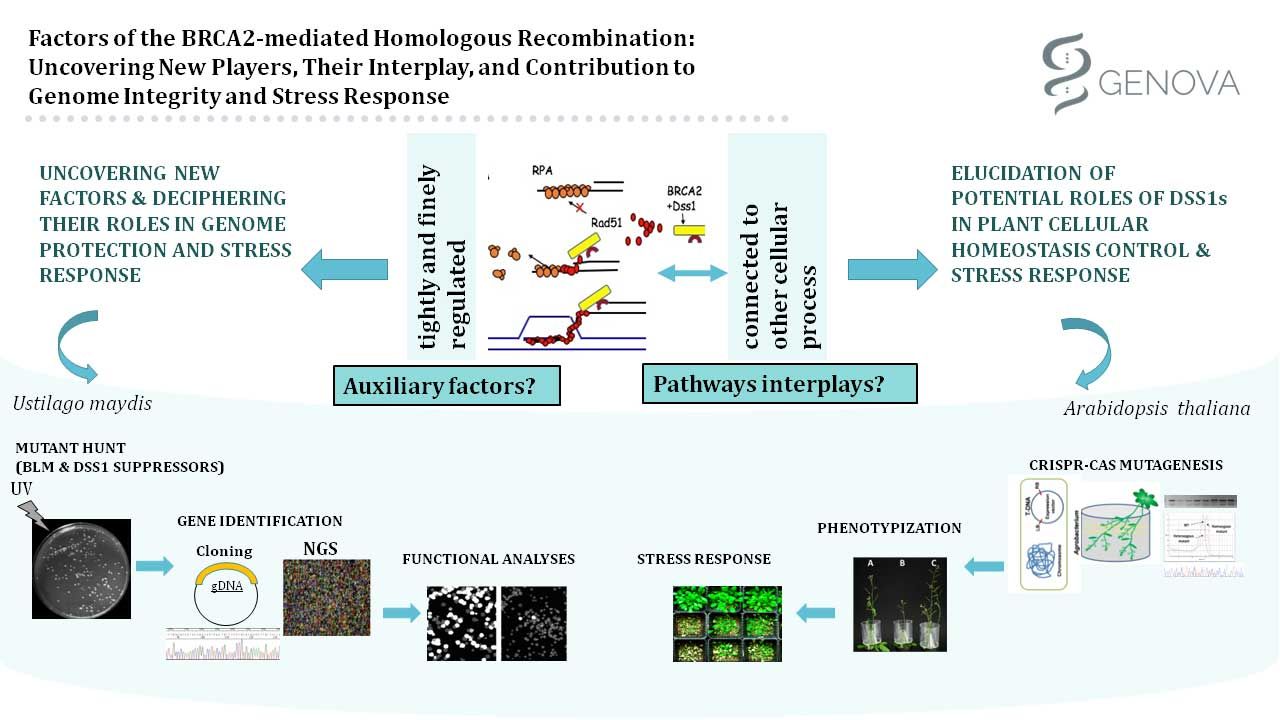GENOVA
Genome stability is critical for normal cell growth and reproduction. On the other hand, DNA is under constant threat from both endogenous as well as exogenous factors that may cause its damage. Consequently, the maintenance of genome/DNA integrity is one of the most fundamental cellular functions, (conserved across all domains of life), necessary for organisms to survive and reproduce under a great variety of environmental stresses. Hence, a better knowledge of the molecular mechanisms underpinning genome stability (DNA repair) is one of the most prominent examples of the basic scientific problems for which advancement in understanding facilitates ever-increasing potential for practical application-ranging from human health and medical testing to agriculture and crop breeding programs.
In humans, aging, inherited as well as many lifetime-acquired genetic diseases such as cancer are consequences of genome instability often resulting in gross chromosome rearrangements. Many of the genes that are mutated in inherited cancer predispositions are found to act in DNA repair pathways. For example, breast cancer 1(BRCA1) and 2 (BRCA2) genes are involved in one of the most important DNA-repair pathway that enables a very precise repair of extremely dangerous double strand DNA breaks via homologous recombination (HR). Moreover, there is growing evidence of importance of genome stability for plants which, as sessile organisms, are more vulnerable to environmental stresses. So, a broader knowledge of the cellular players and mechanisms of maintenance of genome stability will greatly benefit our understanding of how plants cope with adverse environments in this era of global and rapid climate change.
GENOVA project has two overarching aims:
- to identify novel cellular factors involved in maintenance of genome stability (specifically in HR)
- to elucidate molecular functions of these new factors and to characterize their roles in the cellular response to genotoxic and other environmental stresses.
To accomplish these objectives we employ two well-developed experimental model systems: Ustilago maydis and Arabidopsis thaliana. A. thaliana is used for the extension of the findings from U. maydis to a higher plant. Namely, the conservation of the genes involved in HR would indicate that the novel aspects of the HR-control will probably be similar in U. maydis and in A. thaliana.
Publications:
Malesevic J, Kojic M, Stanovcic S, Azanjac N, Milisavljevic M. Identification of Genes Promoting Growth of Ustilago maydis on Biomolecules Released from Cells Killed by Oxidation. J Fungi. 2022;8(9):957.
https://www.mdpi.com/2309-608X/8/9/957




